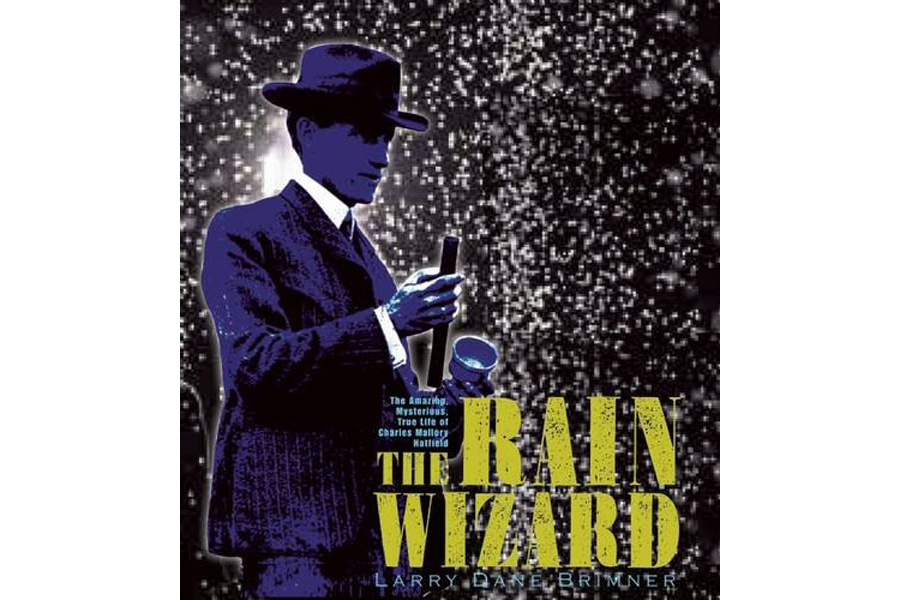Californians know all too well about droughts and the toll they can take in wildfires and lost crops. Thus it was not surprising that the city of San Diego, crippled by drought in the early 1900s, was willing to turn to rainmaker Charles Mallory Hatfield. He claimed to be able to coax raindrops from the sky using his chemicals concoctions and special equipment. Whether or not they really were effective or coincidence made it look that way, the fact is that after he went to work the region was inundated with so much rain that it led to floods that burst a dam, swept away bridges, and closed roads. The city refused to pay Hatfield in a episode that seems as perplexing today as it was then.
Here’s an excerpt from Rain Wizard:
“January 4, 1916. Seth Swenson, the dam keeper, telephoned officials in San Diego at 10:30 that morning with news that a light rain began to fall at Morena Reservoir in the early hours and was continuing. Years later, [Hatfield’s brother] Paul recalled that in order to fill the reservoir, Hatfield had decided to give them the ‘works.’ Instead of the usual single chest of chemicals, he’d brought two. There had been rain on New Year’s Eve and all the area reservoirs had benefited from it with significant gains in stored water. Hatfield was certain he could reach his goal. That morning, shrouded behind black tar paper, he tended his pans of chemicals on the tower. He was intent on earning the $10,000 paycheck promised by San Diego if he could fill Morena Reservoir to overflowing.”
(Calkins Creek 120 pp.)







